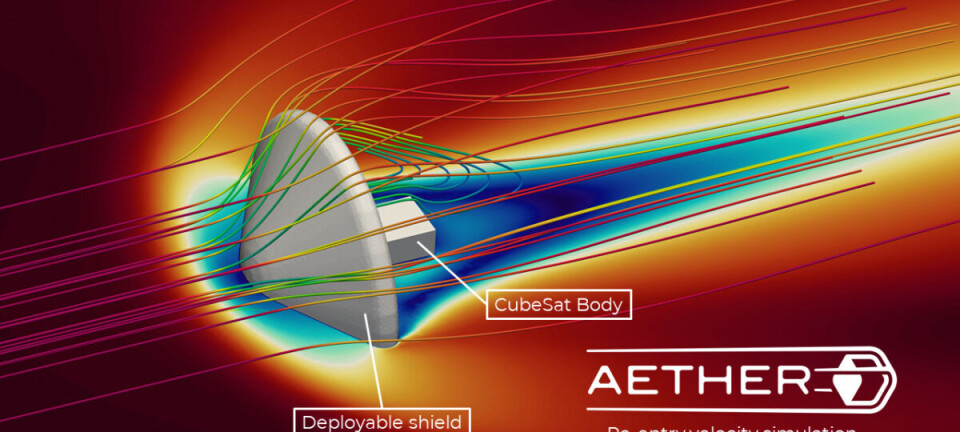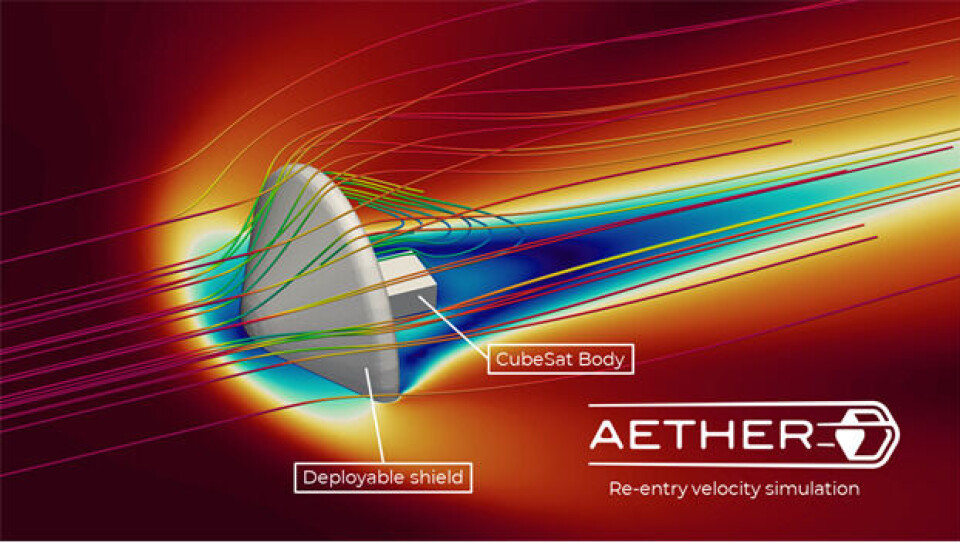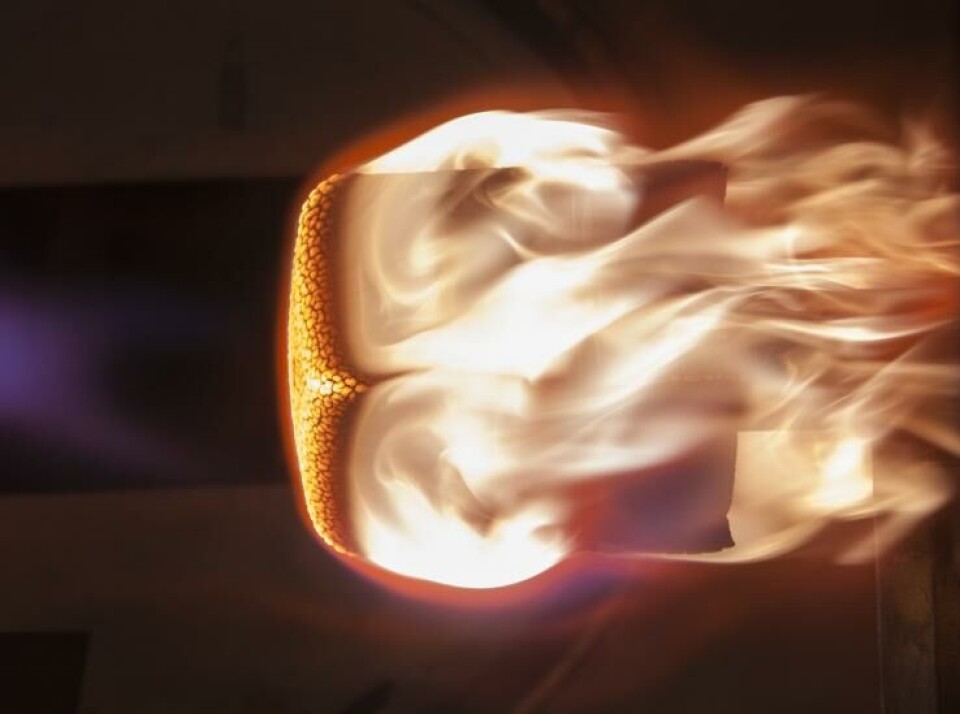article> Science
The challenges of a CubeSat re-entry mission

KU Leuven students working on the Aether project aim to design, build and launch a small satellite (CubeSat) that can survive re-entering through the Earth’s atmosphere
by Roemer Spreij & Simon Verlinden
Contributing Writers from Aether
There is no doubt that it is a very exciting time for space engineering and technology. A shift is underway in the space industry towards ever increasing commercialisation and privatization. The large (inter)national organizations like the European Space Agency (ESA), NASA and Roscosmos that have defined our presence in space are turning towards ambitious large-scale scientific missions, leaving private companies like SpaceX, Boeing and many others to rethink the areas of space exploration left behind by the public sector.
On both fronts there have never been more exciting technical developments: SpaceX has seemingly perfected their revolutionary reusable orbital boosters and are rapidly testing their Starship vehicle concept, dreaming of Mars. That planet also just got a new inhabitant, NASA’s Perseverance rover, which has sent forth the first extra-terrestrial helicopter, Ingenuity. In addition, a consortium of space agencies are set to launch the long-awaited James Webb Space Telescope (succeeding the Hubble) later this year, which will look further into the universe than ever before. An interesting, less-known field that has seen a lot of developments in the last decade, is that of CubeSat nanosatellites. In fact, students from KU Leuven are looking to make their mark here with the Aether project. Aether is a new student team of the postgraduate program TechInVenT with the goal to design, build and launch a CubeSat.

What is a CubeSat and why is it so popular?
CubeSats are miniaturized satellites that are made up of cubes, called ‘units’, of 10x10x10 cm. Most models today are made up of one to three units. This modular design was first proposed in the late 1990s by two professors at the university of Stanford. Today, more than 1000 CubeSats have been launched, and estimates suggests that this number will double in the coming five years.
The reason that CubeSats are so popular is threefold. Firstly, the standardized and lightweight design makes them easy and cheap to launch, riding along with the launches of bigger satellites for a fraction of the price. Secondly, they allow for quick development cycles. CubeSats are generally simple satellites, and a booming market of Commercial-Off-The-Shelf (COTS) components has appeared, making development even easier. Finally, electronics and mechanical devices have been miniaturized so much that it is now possible to use these small platforms in ways previously unheard of. The most popular application for CubeSats is that of Earth remote sensing. From orbit they can generate insights in the composition of the Earth’s atmosphere, locate carbon sinks on our planet or even do early detections of bushfires in Australia. Hence, interest has soared in CubeSat constellations, that use the power of large numbers of satellites to generate even more data.
Aether’s mission is to survive re-entry into Earth’s atmosphere
Getting a CubeSat up into space is relatively cheap and straightforward. A whole other story is getting it back down. All of the CubeSats in low Earth orbit today (below around 2000 km in altitude) will eventually de-orbit and burn up in our planet’s atmosphere. This is due to the tiny amount of aerodynamic drag that is still present at those altitudes.

ATV-4 burning up in the atmosphere during re-entry. Image: ESA.
The mounting problem of space debris has led to ever stronger regulations around the de-orbiting of satellites. Currently, a 25-year deadline applies for the disposal of dead spacecraft. However, there is no CubeSat today that offers an alternative method of disposal than burning up in the atmosphere: landing safely back on Earth. That is exactly Aether’s mission: design, build and launch a CubeSat that can survive a re-entry through the Earth’s atmosphere.
CubeSat return is an interesting engineering challenge on its own that will advance re-entry research and increase our knowledge of the Earth’s atmosphere. But besides this, it will also create a new platform for space science experiments for which the results need to be analysed in a lab back on Earth. An example is the study of bacterial growth in a zero-gravity environment. Today, such an experiment can be conducted on board the ISS and brought back in one of the many capsules that bring astronauts home. However, the waiting lists are tremendously long and the paperwork is awfully complicated. Sample return via CubeSat could be a cheaper, easier and more flexible alternative for these scientists.

Conceptual representation of Aether’s mission.
The critical hurdle to overcome is of course the Earth’s atmosphere. During re-entry, the satellite is essentially descending into ever denser air while moving at orbital speeds of several km/s. The only way for it to slow down is through friction with the air. This causes temperatures to rise up to 1500 °C and higher, well beyond the melting point of most metals, and the satellite experiences large aerodynamic forces. Moreover, the compressed air around the spacecraft turns into plasma during re-entry. As a result, to protect the satellite, Aether is putting its development focus on the construction of a heat shield.
Heat shield development
Throughout the years of space exploration, many types of heat shield (often called a Thermal Protection System, or TPS) have seen use. They can be categorised by the method they use to divert the heat flux. One method is to directly absorb the incoming heat and prevent conduction to the rest of the spacecraft. This is a so-called thermal soak TPS. The many ceramic tiles that covered the Space Shuttle did just this: they could stay cool to the touch on one side while exposed to the searing temperatures on the other. However, these tiles were extremely fragile and mission critical if they failed. In 2003, this very thing happened: tiles that were damaged during ascent, by a loose piece of insulating foam from the Shuttle’s main fuel tank, let in superheated plasma which destroyed the Shuttle, killing its crew of seven.
Another mechanism used to divert heat is called ablation, whereby the TPS material literally burns up during the re-entry. This has two purposes: the chemical reactions in the burning material absorb energy, while the ablative shield expels gases as it decomposes. This blowing effect keeps the hot plasma away from the spacecraft’s body. Furthermore, ablatives are generally more robust and simpler.
Other types of shield have been experimented with by NASA and ESA, such as inflatable composite structures that maximise spacecraft surface area. This is particularly interesting for CubeSats as the payload must be kept as far away from the hot gases as possible. This field shows great potential and is currently a focus of the Aether team.

Inflatable heat shield development of Aether.
At the tiny scales of a CubeSat, the challenges of re-entry are only amplified. Luckily, Belgium has plenty of expertise in this field. The von Karman Institute (VKI) in Sint-Genesius-Rode is world leader in hypersonic flight research. Next year, students from the Aether team will study at VKI to apply this knowledge to the future Aether satellite. VKI has experience in CubeSat re-entry: in 2019, it launched its QARMAN satellite, a 3U CubeSat featuring a cork ablative heatshield. QARMAN will enter the atmosphere somewhere around January 2022.

QARMAN’s ablative heat shield test. Image: ESA.
Conclusion
There is great potential in, and demand for, a flexible and cheap platform that can provide sample return from space to Earth. The science community wants to keep this ability even as the ISS nears the end of its lifetime. Back on Earth at KU Leuven, a new student team is looking for a way to meet this need. Besides having this ambitious scientific goal, the Aether project serves an educational purpose by providing a place for students interested in space to gain experience working on a space mission. The Aether team wants to create an open community for all space enthusiasts at KU Leuven, regardless of educational background. Space in Belgium is on the rise, as Flanders outlines its plans to boost its already vibrant space industry, and KU Leuven’s Aether project is the result of that.
For more regular content
- Follow us on Facebook: https://www.facebook.com/thevoice.loko
- Check out our Instagram page: https://www.instagram.com/thevoice.kuleuven/
- Listen to our podcasts on: https://www.mixcloud.com/The_Voice_KUL_Student_Radio
For submissions or applications
- Email us at thevoice@loko.be
- Or message us on Facebook





